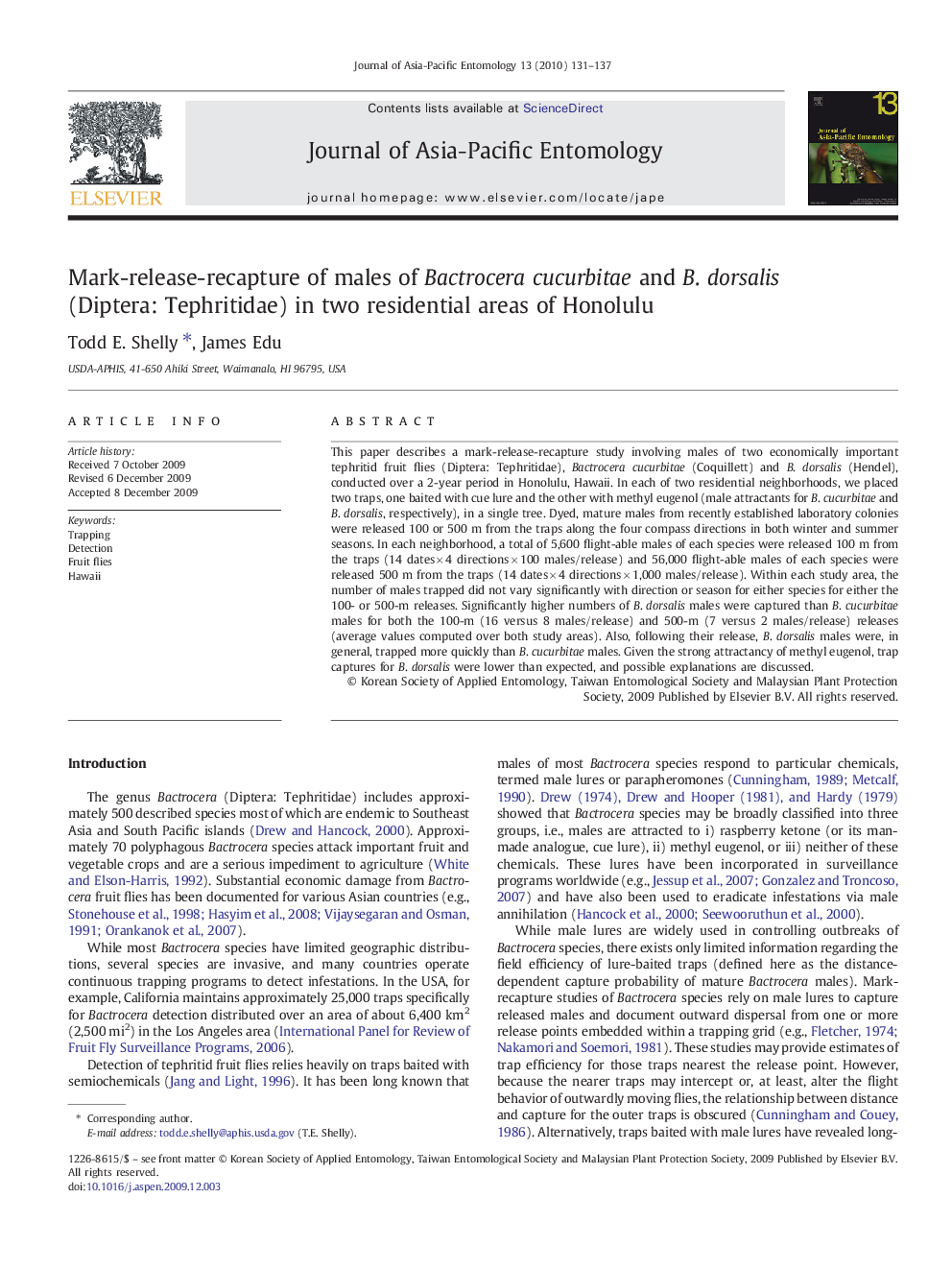| Article ID | Journal | Published Year | Pages | File Type |
|---|---|---|---|---|
| 4524973 | Journal of Asia-Pacific Entomology | 2010 | 7 Pages |
This paper describes a mark-release-recapture study involving males of two economically important tephritid fruit flies (Diptera: Tephritidae), Bactrocera cucurbitae (Coquillett) and B. dorsalis (Hendel), conducted over a 2-year period in Honolulu, Hawaii. In each of two residential neighborhoods, we placed two traps, one baited with cue lure and the other with methyl eugenol (male attractants for B. cucurbitae and B. dorsalis, respectively), in a single tree. Dyed, mature males from recently established laboratory colonies were released 100 or 500 m from the traps along the four compass directions in both winter and summer seasons. In each neighborhood, a total of 5,600 flight-able males of each species were released 100 m from the traps (14 dates × 4 directions × 100 males/release) and 56,000 flight-able males of each species were released 500 m from the traps (14 dates × 4 directions × 1,000 males/release). Within each study area, the number of males trapped did not vary significantly with direction or season for either species for either the 100- or 500-m releases. Significantly higher numbers of B. dorsalis males were captured than B. cucurbitae males for both the 100-m (16 versus 8 males/release) and 500-m (7 versus 2 males/release) releases (average values computed over both study areas). Also, following their release, B. dorsalis males were, in general, trapped more quickly than B. cucurbitae males. Given the strong attractancy of methyl eugenol, trap captures for B. dorsalis were lower than expected, and possible explanations are discussed.
